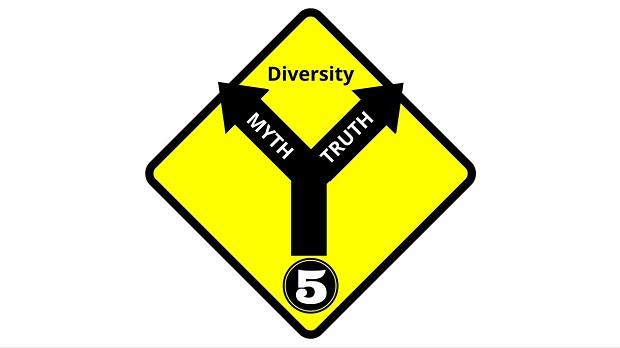
Ask any diversity practitioner if they feel understood, and the most likely answer will be that they do not. Everyone has an idea about what diversity is and what it isn’t. Of course, we are all entitled to our opinions, but too often, our opinions are not facts. This is the last of a five-part series to help dispel some of the myths around diversity work. I last covered Diversity Myth #4: Diversity is a win/lose proposition.
Diversity Myth #5: Diversity is optional.
I’ve saved the biggest fallacy for last – diversity is optional.
Some of the issues we encounter around diversity can be unpleasant or might make us feel uncomfortable. We might not feel like we have the skills to directly discuss these issues, or we’re worried about offending people. We don’t like that everyone isn’t treated equally, but we’re worried that if we treat situations differently, it’ll look like we’re playing favorites. So, rather than dealing with these issues, we put them off or completely avoid them, hoping that maybe they’ll just go away.
Consciously or unconsciously, we think we can ignore diversity if we want to.
How do we ignore diversity? Mostly by treating everyone the same. But “the same” and “with equity” are two different things. It’s difficult to treat everyone with equity, because that means we not only have to consider different perspectives, we must also understand them. Understanding takes time, so within organizations, it becomes much easier to implement zero tolerance policies. The same punishment applies for the same infraction, regardless of the circumstances. Simple. No thinking involved.
We likely do more harm than good when we minimize situations to one solution. Zero tolerance policies unfairly treat people who are uneducated about or inexperienced with certain situations the same way that they treat people who are truly being cruel and obnoxious. When we fail to see the diversity issues within our challenges, we end up creating solutions that don’t work. As a result, our challenges perpetuate themselves and never truly get resolved.
Diversity Truth: Diversity Is
Diversity is. There is no way to avoid it. The population is diverse, so the talent pool is diverse, so our organizations are diverse. Our communities are diverse, so our schools and our places of worship are diverse.
Organizations often “do diversity” because it’s the “right” thing to do. The truth is, it’s the only thing. When we look at diversity broadly – the influences, experiences, and education that create our unique perspectives in the world – it becomes obvious that diversity is a part of every interaction we have. It’s how we see the world – and how we interpret what we are seeing. Organizations that recognize this, plan for it, and engage with it will be more prepared to meet the demands of the future workforce than those who do not.
So, if we automatically default to a diverse state, why do organizations need to pay attention to diversity?
To ensure inclusion.
The fact is that we all have biases. These biases have created systemic issues where not everyone has equal opportunity. Women, people of color, LGBT, those who are differently abled, and others have been systemically excluded from organizations and leadership because they don’t look like or act like the majority population. The sad reality is that it’s easier to go along with the status quo than to admit our biases and make the changes necessary to maintain diversity in our organizations through inclusive policies and practices.
When we fail to acknowledge diversity in our organizations, we are unable to effectively recruit, retain, or promote employees; we do not understand our customers or our constituents; we lose out on productivity and innovation. By paying attention to diversity within organizations, we bring awareness to issues of inequity and acknowledge that we’re going to do something about them.
Recognizing diversity means that we may need to make changes to where and how we recruit. We may need to adjust our ideas about what “good leadership” looks like and accept that there are many different (and equally effective) ways to lead. We may need to learn more about how others see us, not just how we see others. Recognizing diversity means being aware, keeping an open mind, and admitting that our way is not the only way to see the world.
Inclusion may be optional, but diversity just is.
How you deal with it is up to you.

















